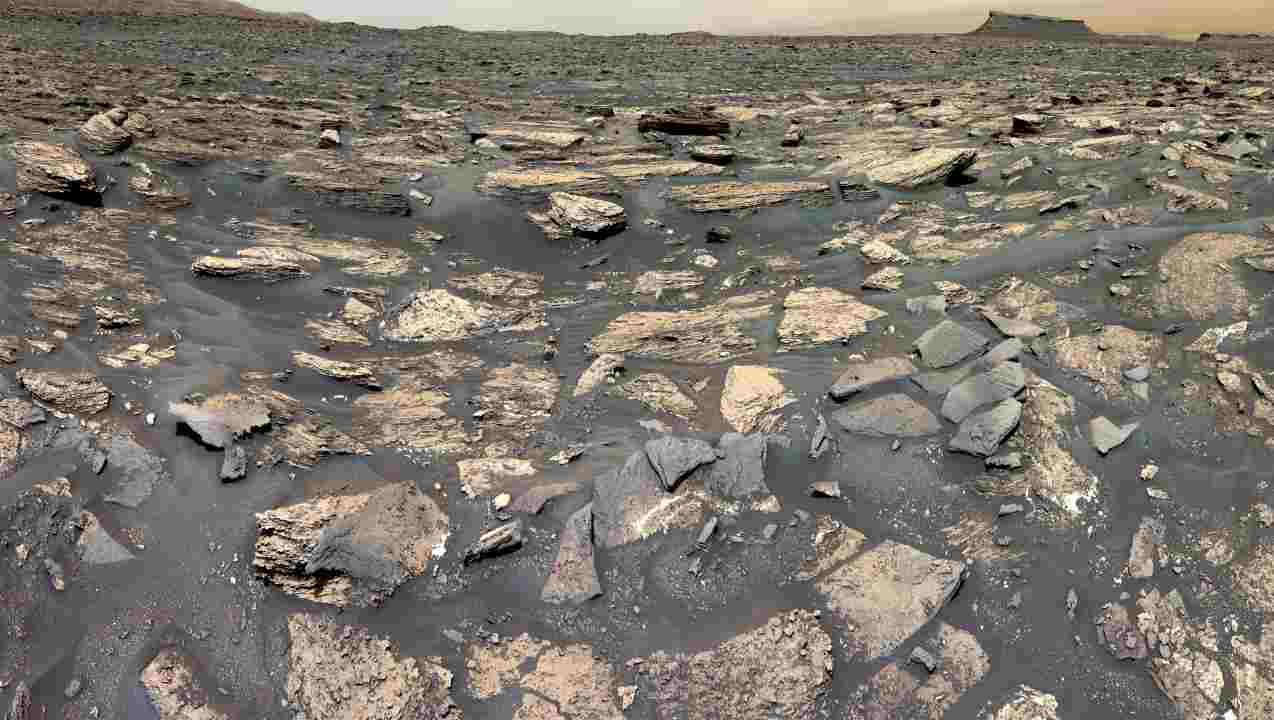A research team using the ChemCam instrument onboard NASA’s Curiosity rover discovered higher-than-usual amounts of manganese in lakebed rocks within Gale Crater on Mars, which indicates that the sediments were formed in a river, delta, or near the shoreline of an ancient lake. The results were published today in Journal of Geophysical Research: Planets.
“It is difficult for manganese oxide to form on the surface of Mars, so we didn’t expect to find it in such high concentrations in a shoreline deposit,” said Patrick Gasda, of Los Alamos National Laboratory’s Space Science and Applications group and lead author on the study.
“On Earth, these types of deposits happen all the time because of the high oxygen in our atmosphere produced by photosynthetic life, and from microbes that help catalyze those manganese oxidation reactions.
“On Mars, we don’t have evidence for life, and the mechanism to produce oxygen in Mars’s ancient atmosphere is unclear, so how the manganese oxide was formed and concentrated here is really puzzling. These findings point to larger processes occurring in the Martian atmosphere or surface water and shows that more work needs to be done to understand oxidation on Mars,” Gasda added.
ChemCam, which was developed at Los Alamos and CNES (the French space agency), uses a laser to form a plasma on the surface of a rock, and collects that light in order to quantify elemental composition in rocks.
The sedimentary rocks explored by the rover are a mix of sands, silts, and muds. The sandy rocks are more porous, and groundwater can more easily pass through sands compared to the muds that make up most of the lakebed rocks in the Gale Crater.
The research team looked at how manganese could have been enriched in these sands—for example, by percolation of groundwater through the sands on the shore of a lake or mouth of a delta—and what oxidant could be responsible for the precipitation of manganese in the rocks.
On Earth, manganese becomes enriched because of oxygen in the atmosphere, and this process is often sped up by the presence of microbes. Microbes on Earth can use the many oxidation states of manganese as energy for metabolism; if life was present on ancient Mars, the increased amounts of manganese in these rocks along the lake shore would have been a helpful energy source for life.
“The Gale lake environment, as revealed by these ancient rocks, gives us a window into a habitable environment that looks surprisingly similar to places on Earth today,” said Nina Lanza, principal investigator for the ChemCam instrument. “Manganese minerals are common in the shallow, oxic waters found on lake shores on Earth, and it’s remarkable to find such recognizable features on ancient Mars.”
Reference: P. J. Gasda et al, Manganese‐Rich Sandstones as an Indicator of Ancient Oxic Lake Water Conditions in Gale Crater, Mars, Journal of Geophysical Research: Planets (2024). DOI: 10.1029/2023JE007923
